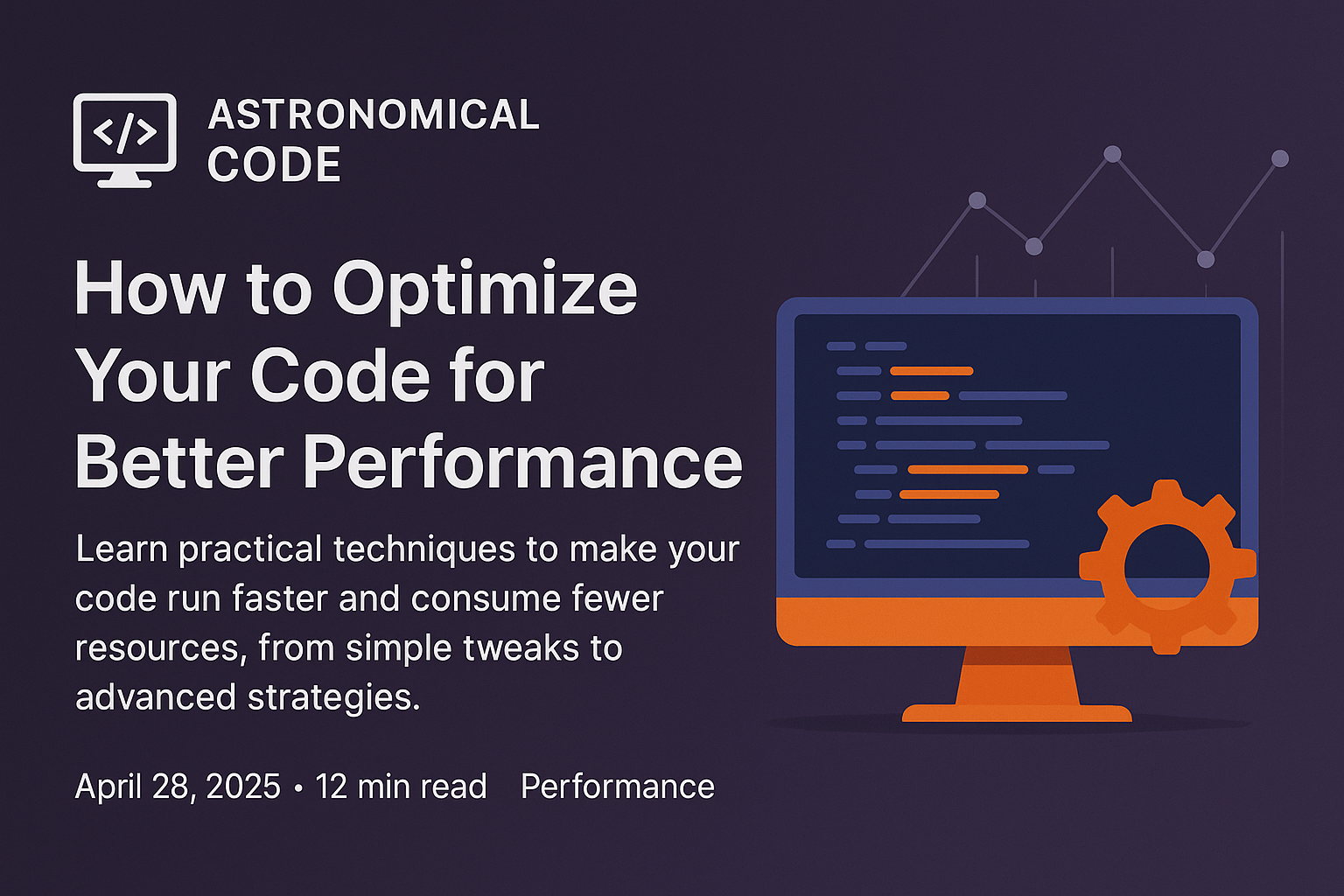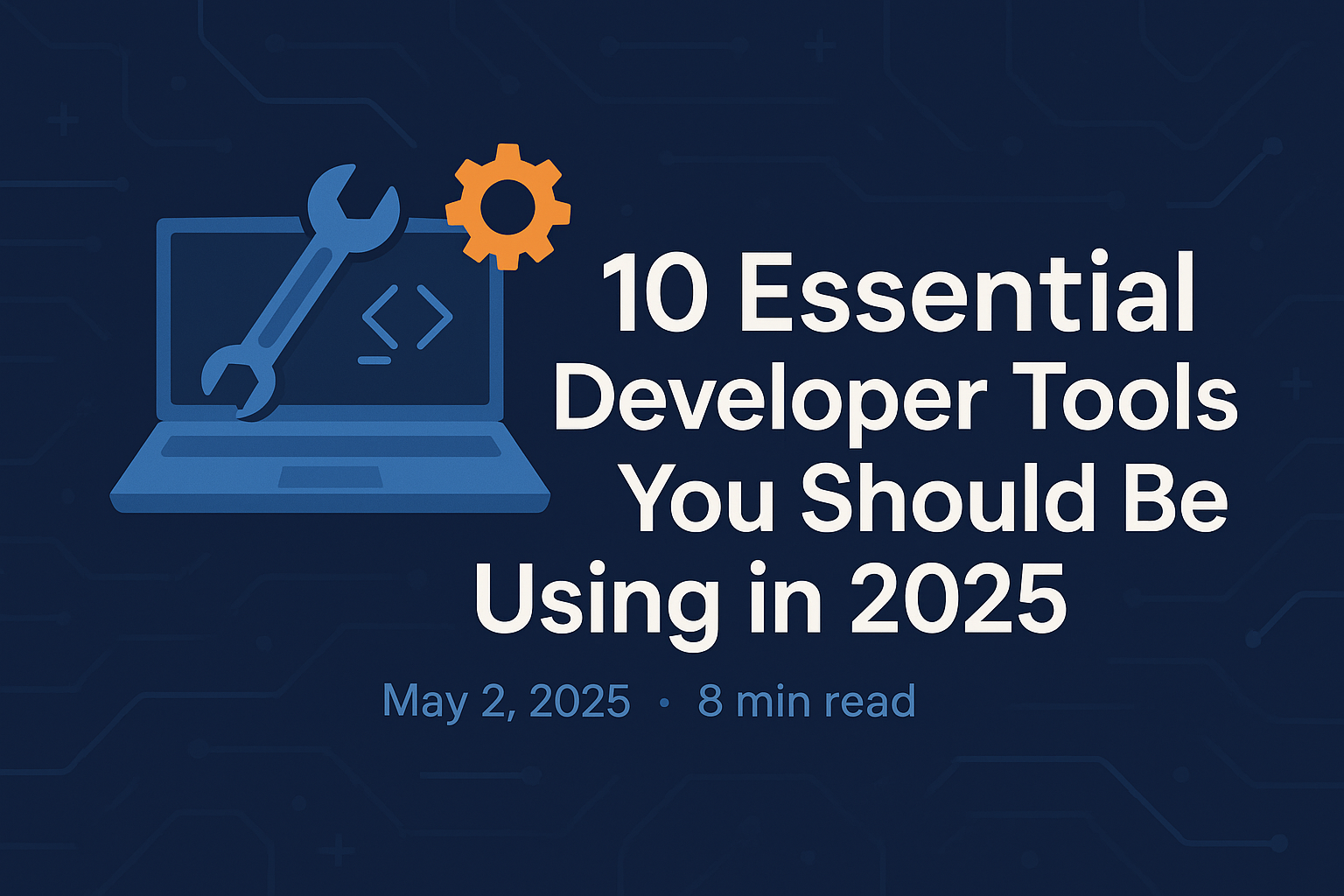How to Optimize Your Code for Better Performance
Performance optimization is a critical aspect of software development. In today's world, where users expect lightning-fast responses and efficient resource usage, optimizing your code can make the difference between a successful application and one that users abandon out of frustration.
This article will walk you through practical techniques to optimize your code, from simple changes that can be implemented in minutes to more complex strategies that might require architectural changes.
Understanding Performance Bottlenecks
Before diving into optimization techniques, it's essential to understand where your performance bottlenecks are. Optimizing without measuring first can lead to wasted effort and sometimes even worse performance.
Profiling Your Code
Modern browsers and development environments come with powerful profiling tools. Chrome DevTools, for instance, allows you to record performance profiles, analyze memory usage, and identify long-running JavaScript tasks.
Here's a simple way to measure the execution time of a function in JavaScript:
javascript
const start = performance.now();
// Your function call here
const end = performance.now();
console.log(Execution time: ${end - start} ms);
Front-End Optimization Techniques
1. Minimize DOM Manipulations
DOM operations are expensive. Each time you manipulate the DOM, the browser needs to recalculate layouts, reflow, and repaint, which can slow down your application.
Instead of:
javascript
// Inefficient - multiple DOM manipulations
for (let i = 0; i < 1000; i++) {
document.getElementById('list').innerHTML += <li>Item ${i}</li>;
}
Try:
javascript
// Efficient - single DOM manipulation
const items = [];
for (let i = 0; < 1000; i++) {
items.push(<li>Item ${i}</li>);
}
document.getElementById('list').innerHTML = items.join('');
2. Use Event Delegation
Instead of attaching event listeners to multiple elements, use event delegation to attach a single event listener to a parent element.
javascript
// Instead of attaching event listeners to each button
document.getElementById('container').addEventListener('click', (e) => {
if (e.target.matches('button')) {
// Handle button click
}
});
3. Optimize Rendering Performance
- Use CSS animations instead of JavaScript animations when possible.
- Apply the
will-changeCSS property to elements that will animate frequently. - Use
requestAnimationFramefor smoother animations. - Consider using CSS containment to isolate parts of the page.
Back-End Optimization Techniques
1. Optimize Database Queries
Database operations are often the biggest performance bottleneck in back-end code. Here are some tips:
- Use indexes for frequently queried columns.
- Limit the amount of data retrieved from the database.
- Use pagination to handle large result sets.
- Consider denormalizing data for read-heavy operations.
2. Implement Caching
Caching is one of the most effective ways to improve performance. You can cache:
- Database query results
- API responses
- Rendered HTML pages
- Computed values
javascript
// Simple in-memory cache example
const cache = new Map();async function fetchWithCache(url, ttlMs = 60000) {
const now = Date.now();
const cached = cache.get(url);
if (cached && now - cached.timestamp < ttlMs) {
return cached.data;
}
const response = await fetch(url);
const data = await response.json();
cache.set(url, { data, timestamp: now });
return data;
}
3. Use Asynchronous Processing
For time-consuming tasks that don't need immediate feedback, consider using asynchronous processing with message queues or background jobs.
Algorithmic Optimization
1. Choose the Right Data Structures
The choice of data structure can dramatically affect performance:
- Use Sets or Maps for faster lookups instead of arrays when appropriate.
- Consider specialized data structures for specific use cases (e.g., Tries for autocompletion).
2. Optimize Loop Performance
Loops are often performance-critical. Here are some tips:
- Avoid unnecessary operations inside loops.
- Cache array lengths when iterating.
- Consider loop unrolling for very performance-critical code.
javascript
// Instead of
for (let i = 0; i < array.length; i++) {
// Loop body
}// Cache the length
const len = array.length;
for (let i = 0; i < len; i++) {
// Loop body
}
3. Use Memoization for Expensive Calculations
javascript
function memoize(fn) {
const cache = new Map();
return (...args) => {
const key = JSON.stringify(args);
if (cache.has(key)) return cache.get(key);
const result = fn(...args);
cache.set(key, result);
return result;
};
}// Usage
const expensiveCalculation = memoize((n) => {
// Expensive calculation here
return n * n;
});
Memory Optimization
1. Avoid Memory Leaks
Memory leaks can drastically degrade performance over time. Common causes include:
- Forgotten event listeners
- Circular references
- Large objects kept in closures
2. Reduce Memory Usage
- Use object pooling for frequently created and discarded objects.
- Consider typed arrays for large numerical data sets.
- Use streaming for processing large files or data sets.
Network Optimization
1. Minimize Request Payload
- Compress responses (GZIP, Brotli)
- Use pagination and lazy loading
- Implement GraphQL to fetch only needed data
2. Optimize API Design
- Design endpoints to minimize the number of requests needed
- Use batch operations when appropriate
- Implement rate limiting to prevent abuse
Tools for Performance Optimization
Several tools can help you identify and fix performance issues:
- Lighthouse - for web application performance auditing
- WebPageTest - for detailed web page load testing
- Chrome DevTools Performance panel - for JavaScript and rendering performance analysis
- Memory Profiler - for identifying memory leaks
- Webpack Bundle Analyzer - for optimizing bundle size
Conclusion
Performance optimization is an ongoing process rather than a one-time task. By implementing the techniques described in this article and regularly measuring and testing your application's performance, you can ensure that your code runs as efficiently as possible.
Remember, always measure before and after optimization to ensure that your changes are actually improving performance. Sometimes, what seems like an optimization can actually make things worse!



